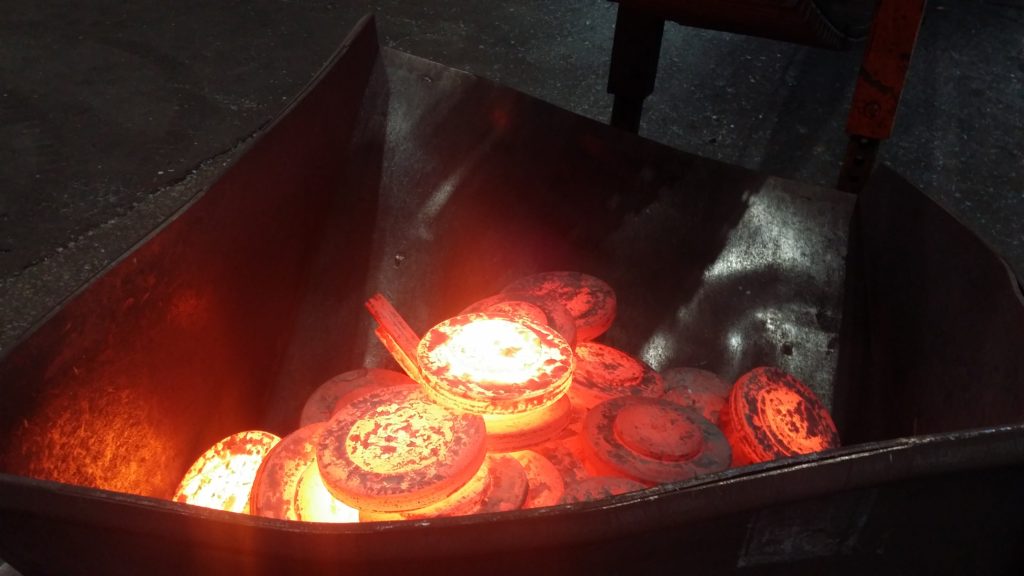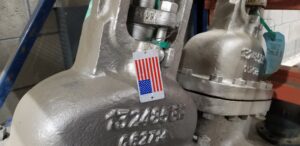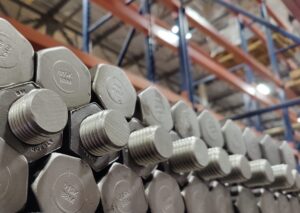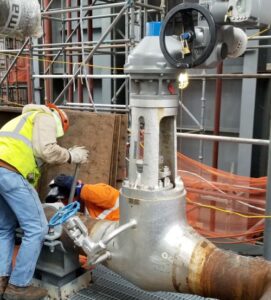What is a Mill Test Report?
Mill Test Reports (or MTR’s) are often referred to by a host of different names including Certified Material Test Report (or CMTR), Test Report, Mill Sheet, and Mill Cert. Ultimately, it is a document used for traceability by many different professionals throughout the quality-control process. These documents certify that a material’s physical and metallurgic properties meet the required standards and chemical properties of the designated piece. The document has an alphanumeric number known as a heat number or a melt number. This number is designated when a small sample is drawn from a batch of metal. The number is assigned to corresponding pieces from that batch and will travel with the pieces throughout the manufacturing processes to provide traceability of the metal. An analysis of the sample is done to show the chemical composition and is listed on the MTR. This number will be imprinted on the final product (fitting, flange pipe, sheet, bar or other part) and can be used to trace the material back to its origin as well as any treatment or process that is performed on it.

In many cases there may also be a lot number listed on the MTR which designates that a portion of the material was broken off under a specific heat number. Some mills only use full heats rather than smaller lots. Specifics on how lot numbers are used can vary depending on the specific mill. Many mills also include a quantity of parts run during that specific lot. This information can cause some confusion. For example, if 11 pieces of a 12in 150# 316/316L RF WNF with heat #123456 Lot #7890 were received and all 11pc have the same heat number, but your MTR says only 10 pieces were produced, what should you do? More than likely you will be able to obtain from the mill, manufacturer, or your supplier a copy of another MTR from a different lot number and quantity but with the same raw material and heat number to cover your order.
How to read an MTR:
MTR’s include basic information such as manufacturer, country of origin, standards, material size, alloy, and chemical composition analysis results.
Reading and reviewing MTR’s can be a daunting task, especially if you do not do it often. This is made even more difficult because there is no required or “standard” format that the information needs to be provided in and it is often translated from another language. By following the steps below you will be able to pull out the basic information to confirm that your material and its accompanying MTR meet your project needs.
1. Visually inspect the material piece for a stenciled, written, or imprinted heat number.
Tip: Try using a flashlight, or for a stamped number highlight using a paint pen, you maybe surprised how much easier it will make reading the numbers.
2. Locate the corresponding number on your MTR.
3. Confirm the correct physical size, pressure, and material of the piece is also listed on the MTR.
Note: Keep in mind the batch may have been used for many different sizes or configurations using the same raw material.
4. Review the specifications such as ASME/ASTM/EN by comparing the material analysis table of your MTR to the acceptable ranges for your project or specification. Mechanical properties vary based on the specific alloy and specifications, but typically include tensile strength, hardness, charpy impact testing, and yield strength.
If you need additional help on your Mill Test Reports, contact the industrial sales team at Standard of New England. We work closely with our customers to get their questions answered and assist with material requirements.







